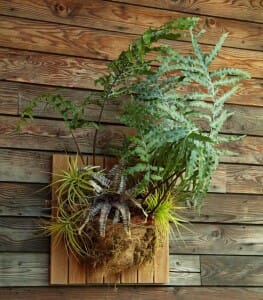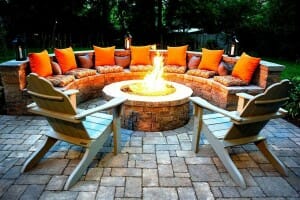Consider this: maintaining an acre of high-quality lawn turf is, on average, four times as expensive to maintain and requires five times as much manpower for the upkeep needed versus an acre of sustainable landscaping. Few people relish the idea of mowing the lawn in the heat of a Lowcountry summer!
Start your free trial today!
Try Buildium for free for 14 days. No credit card needed.
Start Your TrialIn the third installation of our four-part series, we take a look at the “green” landscaping trends that are becoming more popular in the South. See if you can spot the overarching trend!
“Laundry to Landscape”
This “greywater” recycling technique promotes water conservation by diverting dirty (“greywater”) from your washing machine and routes it to mulch basins around trees and bushes. According to a survey by the American Society of Landscape Architects, greywater recycling comes in at #1 in terms of projects expected to have the highest consumer demand in 2016.
The simplest “laundry to landscape” systems attach a drain hose to the machine without having to alter existing plumbing. Depending on the type of washing machine a person owns (and the amount of laundry they do!), this can channel 40 gallons per load that can be reused to water the lawn and garden! Not only does this save homeowners money, but it reduces the need to hand-water plants or fuss with irrigation systems.
A Return of the Air Plants

During the 1970s, there was an explosion of air plants throughout the country. Air plants, a species more formally known as Aerophytes, are perennial flowering plants that are native to Central and South America. Air plants grow without soil while attached to other plants. They have no roots. Instead, air plants get their water and nutrients primarily from the air and rain. A few decades ago, these were popular indoor plants. Today, they’ve become a popular feature in outdoor landscape design.
“The warm and humid southeastern U.S., from the Carolinas south to Florida and west to coastal Texas, is a great region for growing these plants,” writes landscape architect Falon Mihalic. “[They are] great plants for integrating into living walls. All they require is a place to attach to, filtered sunlight and humidity.” Mihalic suggests air plants be mounted to a board or tree branch, or suspended from a tree canopy by a rope or chain.
Water Features Give Way to Fire Features

For homeowners down south, it has typically been a prerequisite that their property come fully equipped with an in-ground pool. But pools are expensive and time consuming to maintain, as many have come to realize. Instead, there’s a notable shift from water features (e.g. pools, fountains, ponds) to fire features. “Water features have dropped off,” says Pam Belecki, general manager of Four Seasons Garden Center. “People want fire features because they are family-friendly and are multi-use.”
Fire pits are the most popular of all fire features. “The fire pit trend is getting more extensive,” says Lisa Port of Banyon Tree Design Studio. “My clients want a fire pit area for teenagers, for example, so they can keep an eye on them but give them their own space.” Those looking to roast more than just marshmallows might also consider an outdoor pizza oven, which are also growing in popularity. These fire features help extend the living area to the outside and allow homeowners to maximize the amount of time they spend outdoors.
Prevalence of LED Lighting
The rapid evolution of technology has made LED lighting more popular than ever, particularly in the Southeast where a mild climate allows for homeowners to spend more time outdoors than their peers in other parts of the country. The upfront costs are steeper than traditional lighting, but LED lights save homeowners on energy costs over the long-term.
Not only is the quality of LED lighting improving, but so is the array of LED options. Those who are particularly tech-savvy might opt for lights controllable via their smart phone. Others might prefer to invest in multi-colored LED lights to adjust colors schemes for big events or holidays. “What’s really interesting is to set lighting schemes using softer tones to highlight different plant materials, such as deepening the color of a cedar with blue/green colored lights,” explains Port. Solar-powered lights are another common “green” design feature, but the trend for solar lights appears to be giving way to LED lighting in 2016.
Did you spot the trend?
So, what do all of these trends have in common? One theme we noticed when researching sustainable landscaping practices in the South is that homeowners are busy—they want to spend their time enjoying their backyards instead of maintaining them! The shift to sustainable, low-maintenance design allows homeowners to do just that. It’s time to put away the tractor and break out the cornhole boards!
Also be sure to check out what people are doing to save water and money in the Northeast and Southwestern United States!
Read more on Maintenance

